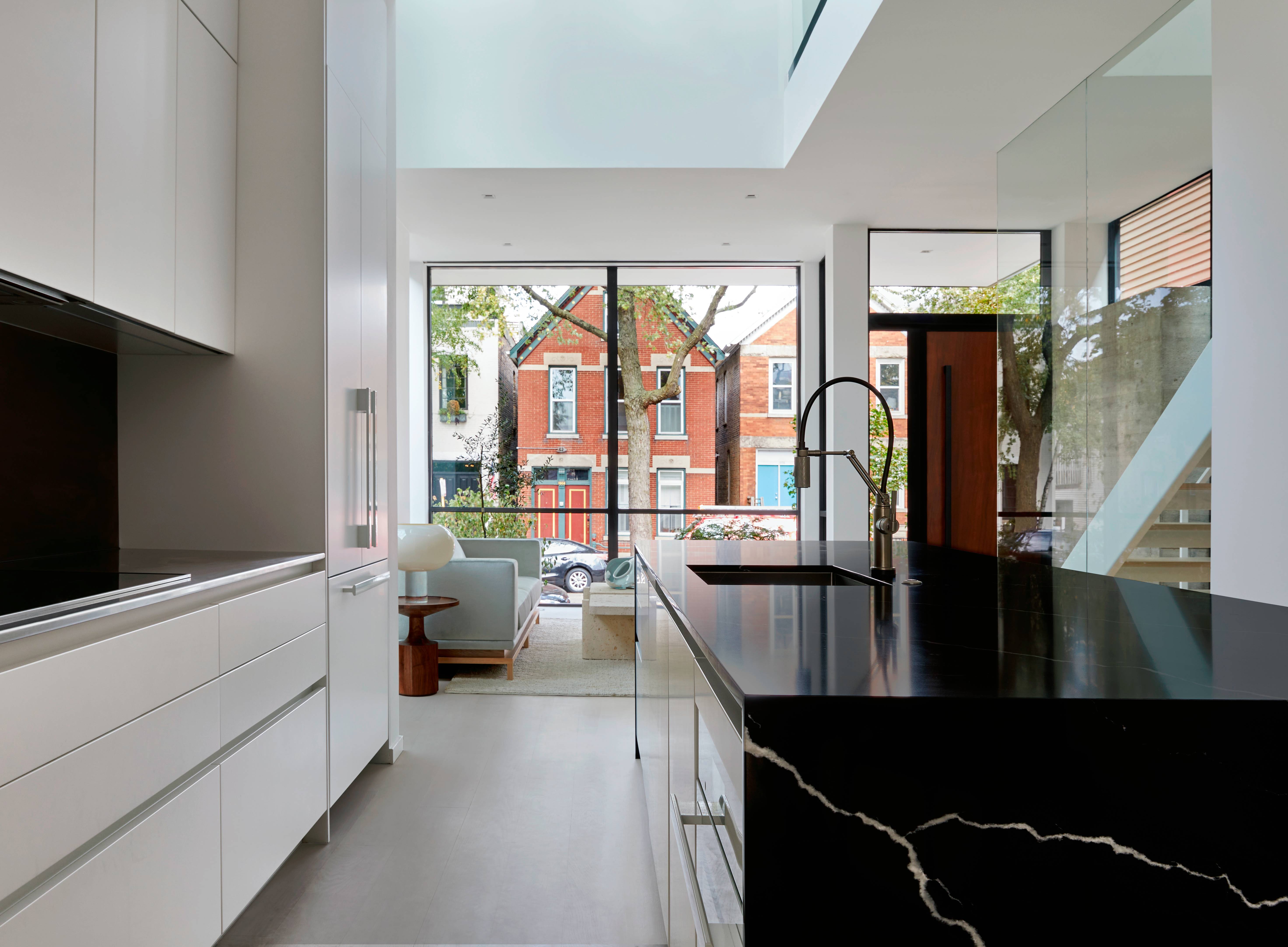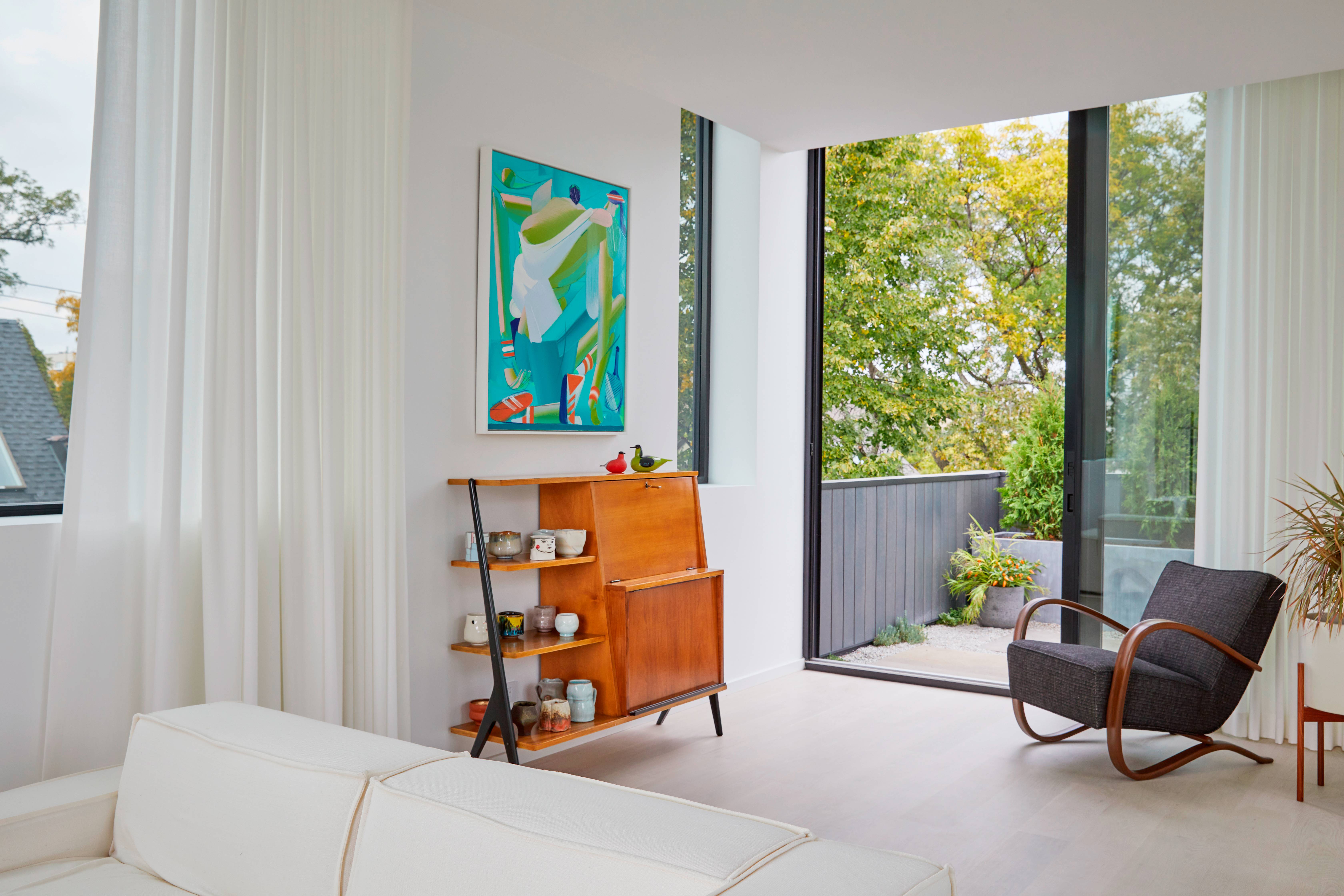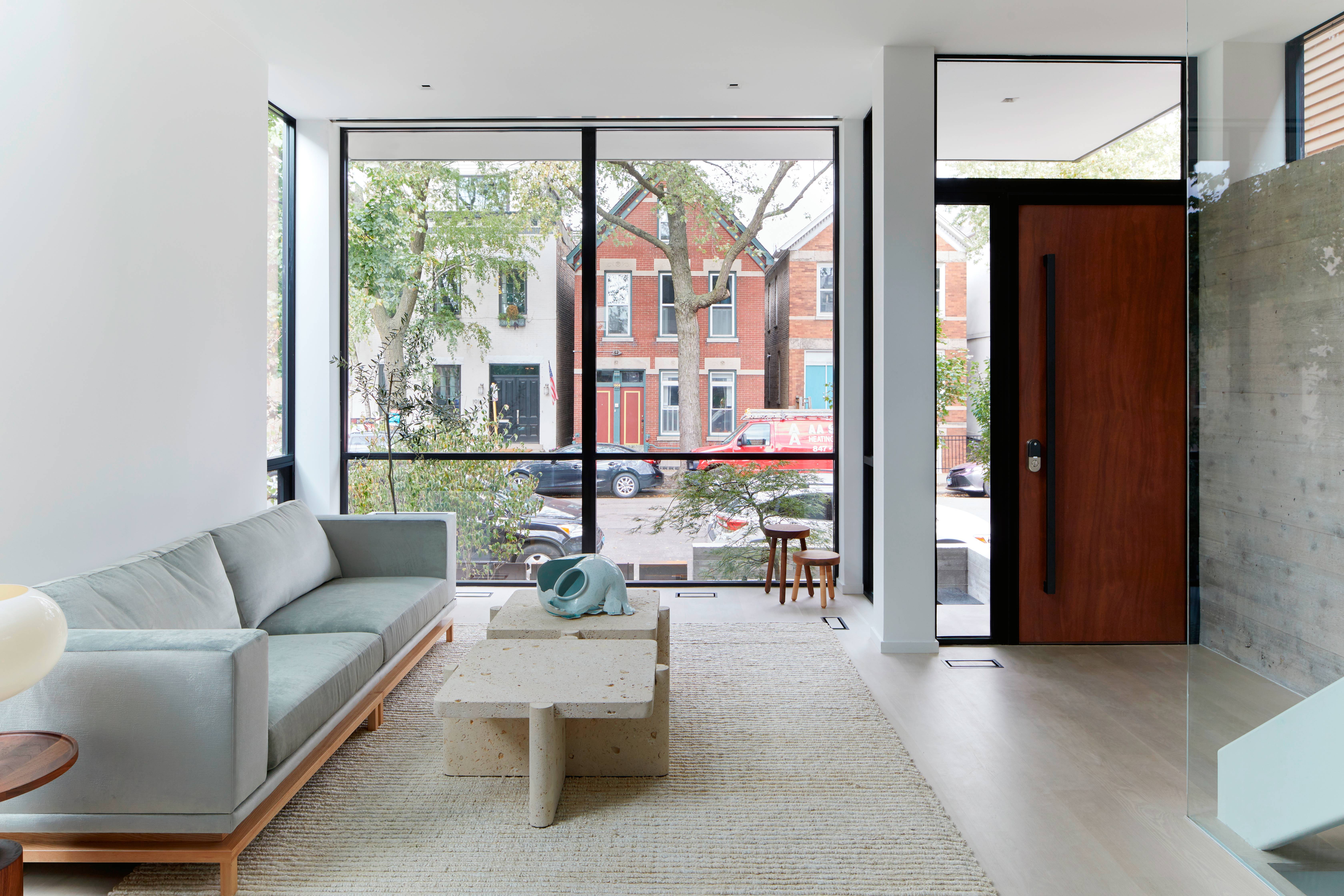Metal-clad house makes a strong statement in Chicago
Studio Dwell’s House 1909 makes a strong statement in Chicago’s historic neighbourhood of Bucktown
Marty Peters - Photography

The historic Chicago neighbourhood of Bucktown lies to the north of the city centre, bisected by the I-90. Shaped by over a century of immigration by Europe and Central America, it is an architecturally diverse part of town that has inevitably been transformed by 21st-century gentrification. Grand Victorian houses are mixed with contemporary structures on vacant lots, together with modern condos and all the upscale commercial trappings of a district on the rise. Now, a sharp, metal-clad house has been added to the area’s collection of domestic offerings.

The ’public’ box on the first floor of House 1909 by Studio Dwell
House 1909 was designed by Chicago’s Studio Dwell Architects for a slender plot alongside a mixed bag of traditionally styled brick houses.
The architects have made the most of the site by digging down to create a generous garden level, with three terraces on the floors above. They describe the structure as a ‘series of stacked metal-clad boxes’, sub-dividing each functional component into its own area.

A double-height space above the first-floor kitchen in the House 1909 project
At street level is the ‘public’ box, a fully glazed living and dining area that overlooks the street, providing views right through the house.
The main staircase is enclosed by balustrades of tall frameless glass, and exposed shuttered concrete anchors the space and provides a contrast to the brick walls of the adjacent house. This level is cantilevered out above the first floors, providing shade for the glass wall beneath it.

The second floor is the ‘private’ box, with only a single window to the street elevation. Two en-suite bedrooms open off a large landing, with a void through to the kitchen below.
Above this is the ‘green’ box, a self-contained ‘penthouse’ level with terraces front and rear, set back from the street to create a secluded suburban eyrie.
Receive our daily digest of inspiration, escapism and design stories from around the world direct to your inbox.

The main staircase with its glass balustrade
The programme was tight, even though it integrates a double garage and a generous amount of natural light from all directions. Although the materials include cor-ten steel, stone, the aforementioned concrete, and details in walnut wood, the bulk of the interior is white to maximise the spread of light.
Up on the penthouse level, where light is less of an issue, full-height sliding doors provide access to each deck, opening up the space in the summer to the views of the Chicago skyline.

The terrace on the ’penthouse’ level
Mark Peters founded Studio Dwell Architects in 2005. The small studio has won awards from the AIA and places an emphasis on rich materials and light-filled spaces, regardless of the scope and scale of the brief.

INFORMATION
Jonathan Bell has written for Wallpaper* magazine since 1999, covering everything from architecture and transport design to books, tech and graphic design. He is now the magazine’s Transport and Technology Editor. Jonathan has written and edited 15 books, including Concept Car Design, 21st Century House, and The New Modern House. He is also the host of Wallpaper’s first podcast.
-
 Year in review: the shape of mobility to come in our list of the top 10 concept cars of 2025
Year in review: the shape of mobility to come in our list of the top 10 concept cars of 2025Concept cars remain hugely popular ways to stoke interest in innovation and future forms. Here are our ten best conceptual visions from 2025
-
 These Guadalajara architects mix modernism with traditional local materials and craft
These Guadalajara architects mix modernism with traditional local materials and craftGuadalajara architects Laura Barba and Luis Aurelio of Barbapiña Arquitectos design drawing on the past to imagine the future
-
 Robert Therrien's largest-ever museum show in Los Angeles is enduringly appealing
Robert Therrien's largest-ever museum show in Los Angeles is enduringly appealing'This is a Story' at The Broad unites 120 of Robert Therrien's sculptures, paintings and works on paper
-
 Step inside this resilient, river-facing cabin for a life with ‘less stuff’
Step inside this resilient, river-facing cabin for a life with ‘less stuff’A tough little cabin designed by architects Wittman Estes, with a big view of the Pacific Northwest's Wenatchee River, is the perfect cosy retreat
-
 Remembering Robert A.M. Stern, an architect who discovered possibility in the past
Remembering Robert A.M. Stern, an architect who discovered possibility in the pastIt's easy to dismiss the late architect as a traditionalist. But Stern was, in fact, a design rebel whose buildings were as distinctly grand and buttoned-up as his chalk-striped suits
-
 Own an early John Lautner, perched in LA’s Echo Park hills
Own an early John Lautner, perched in LA’s Echo Park hillsThe restored and updated Jules Salkin Residence by John Lautner is a unique piece of Californian design heritage, an early private house by the Frank Lloyd Wright acolyte that points to his future iconic status
-
 The Stahl House – an icon of mid-century modernism – is for sale in Los Angeles
The Stahl House – an icon of mid-century modernism – is for sale in Los AngelesAfter 65 years in the hands of the same family, the home, also known as Case Study House #22, has been listed for $25 million
-
 Houston's Ismaili Centre is the most dazzling new building in America. Here's a look inside
Houston's Ismaili Centre is the most dazzling new building in America. Here's a look insideLondon-based architect Farshid Moussavi designed a new building open to all – and in the process, has created a gleaming new monument
-
 Frank Lloyd Wright’s Fountainhead will be opened to the public for the first time
Frank Lloyd Wright’s Fountainhead will be opened to the public for the first timeThe home, a defining example of the architect’s vision for American design, has been acquired by the Mississippi Museum of Art, which will open it to the public, giving visitors the chance to experience Frank Lloyd Wright’s genius firsthand
-
 Clad in terracotta, these new Williamsburg homes blend loft living and an organic feel
Clad in terracotta, these new Williamsburg homes blend loft living and an organic feelThe Williamsburg homes inside 103 Grand Street, designed by Brooklyn-based architects Of Possible, bring together elegant interiors and dramatic outdoor space in a slick, stacked volume
-
 This ethereal Miami residence sprouted out of a wild, jungle-like garden
This ethereal Miami residence sprouted out of a wild, jungle-like gardenA Miami couple tapped local firm Brillhart Architecture to design them a house that merged Florida vernacular, Paul Rudolph and 'too many plants to count’